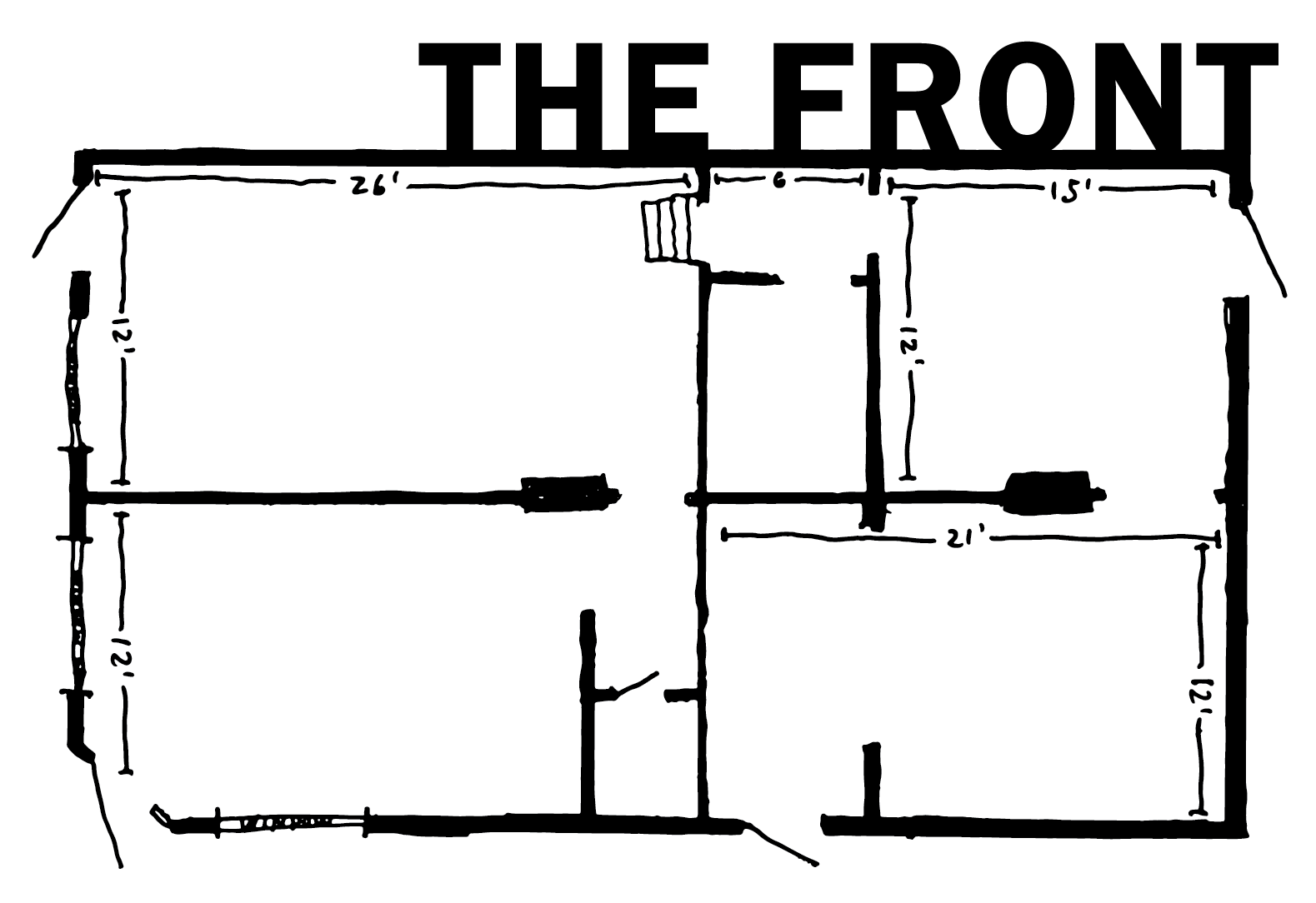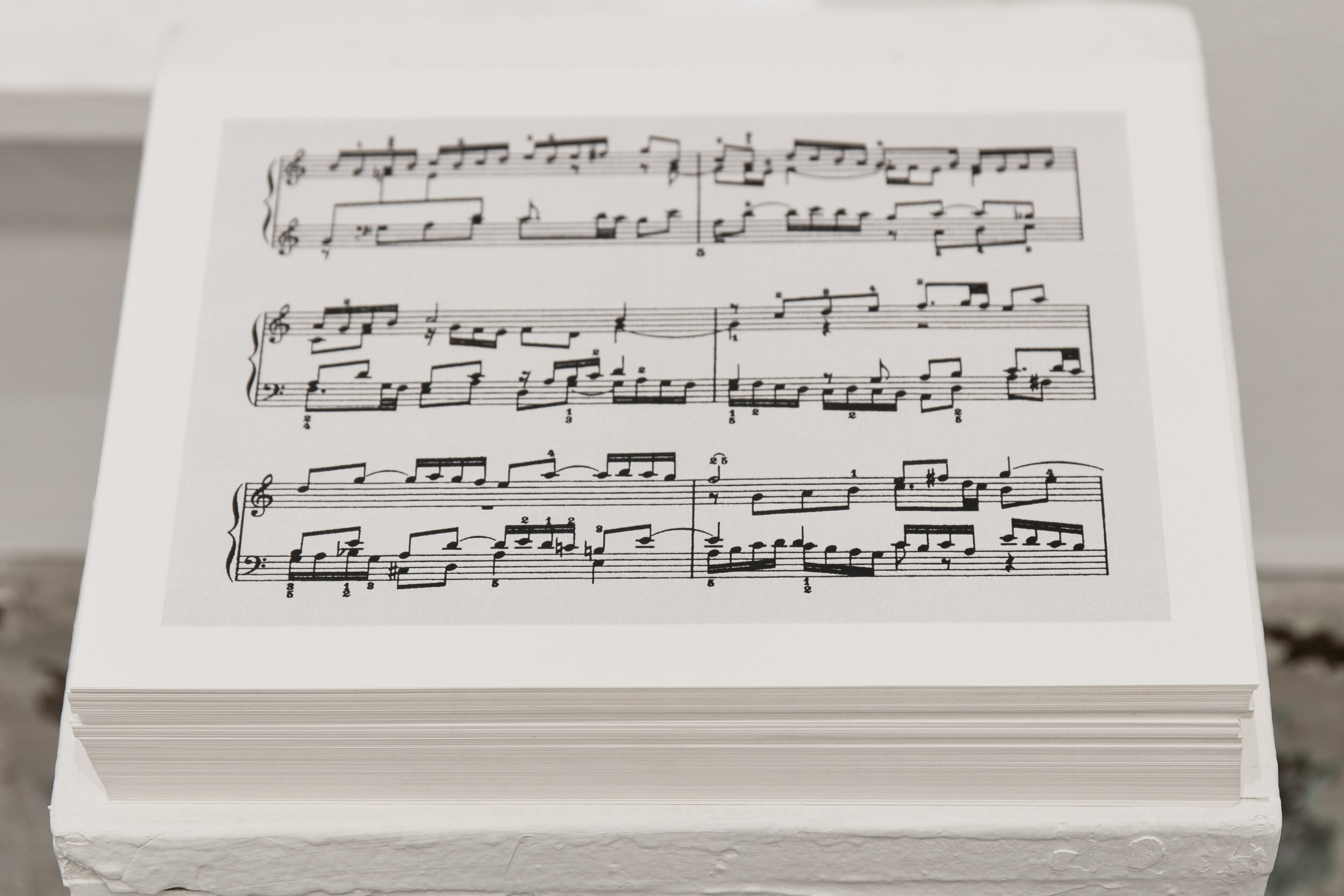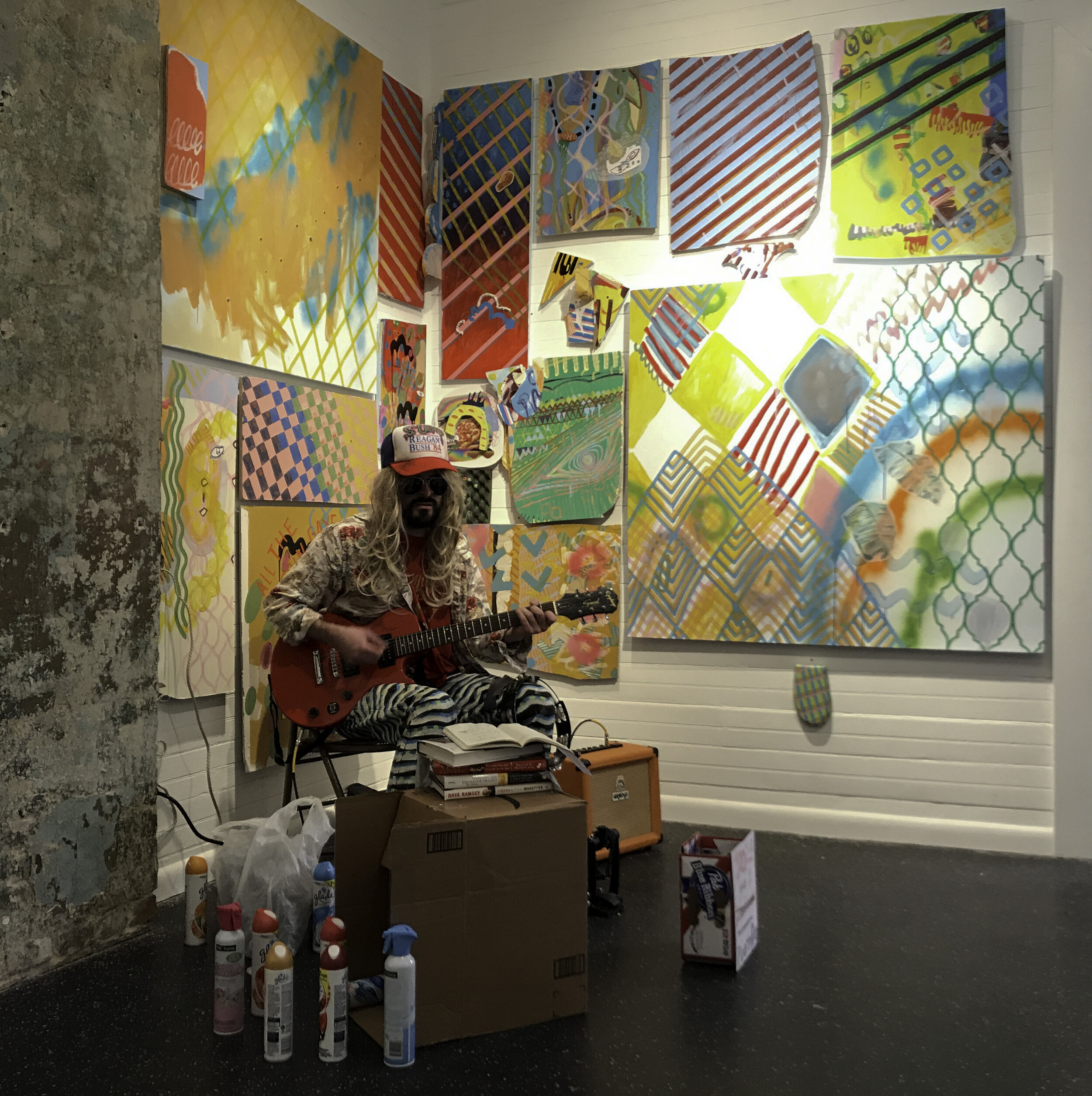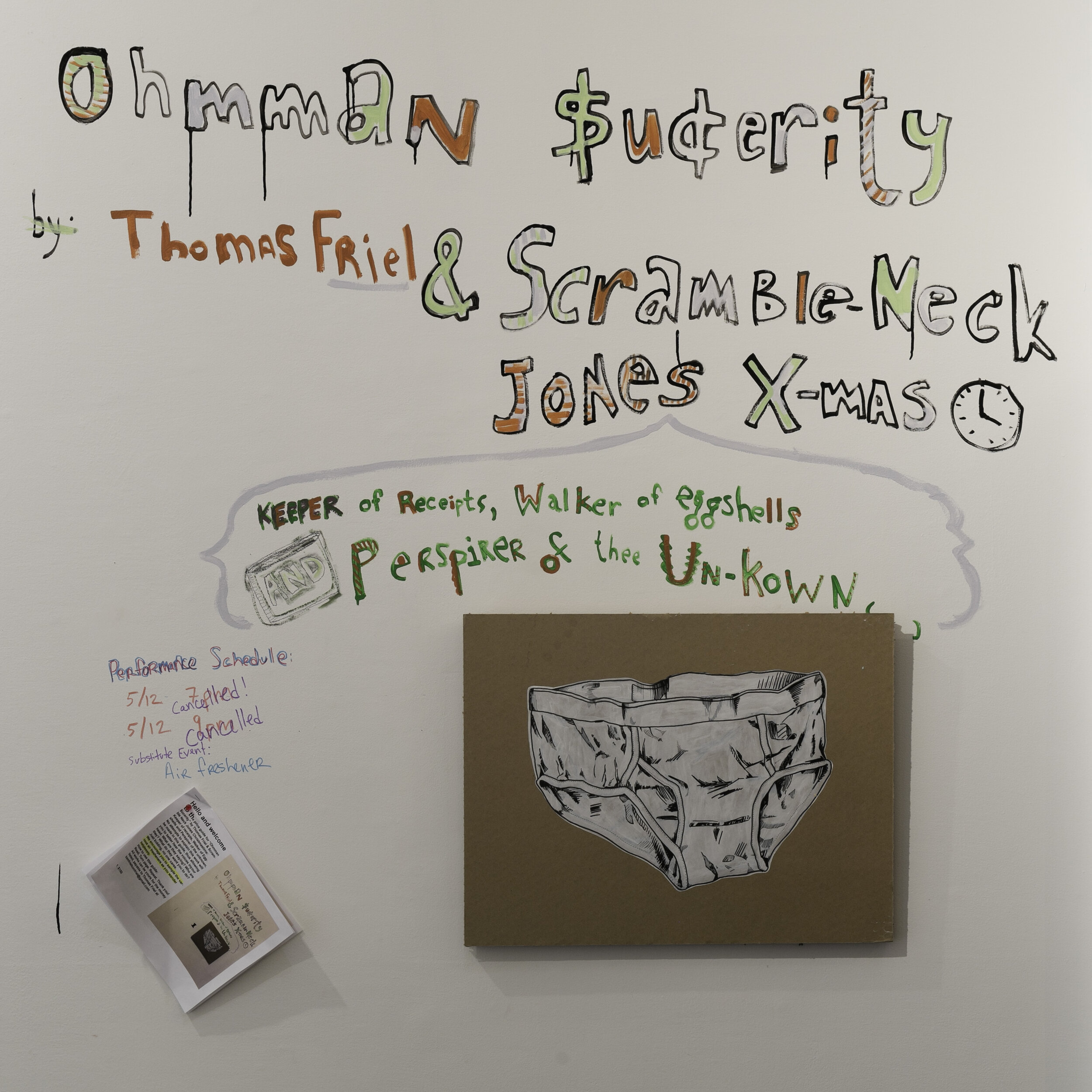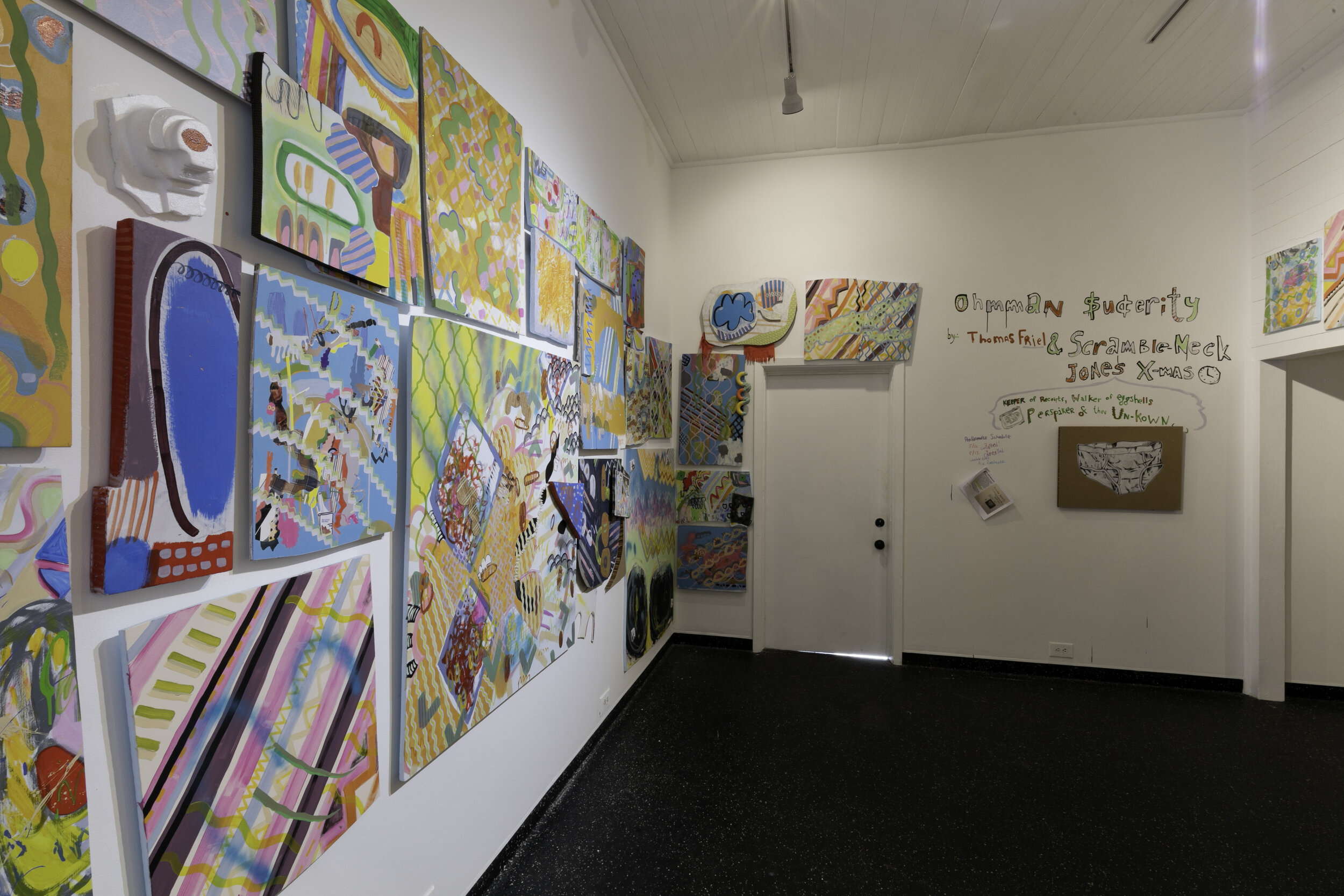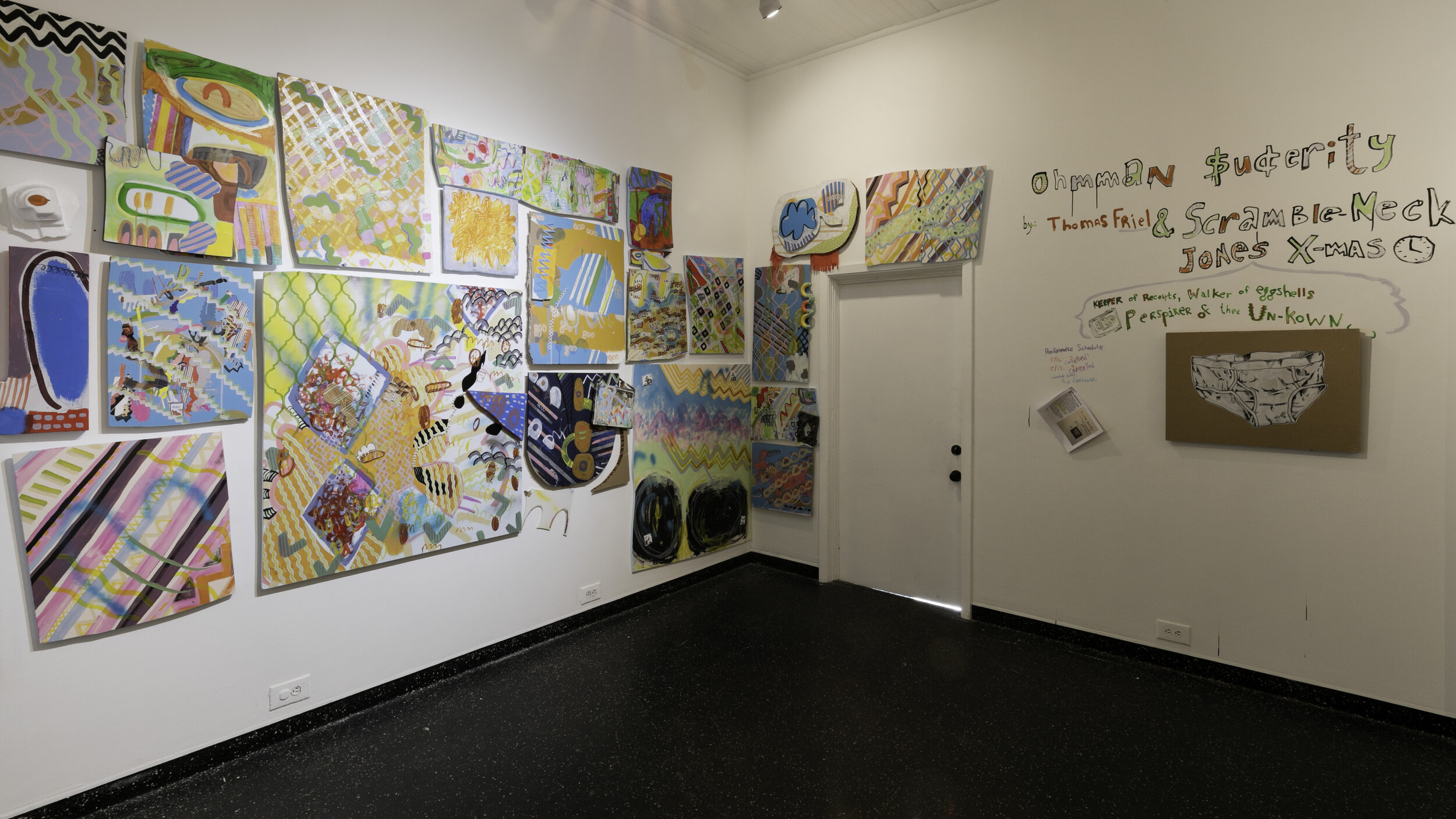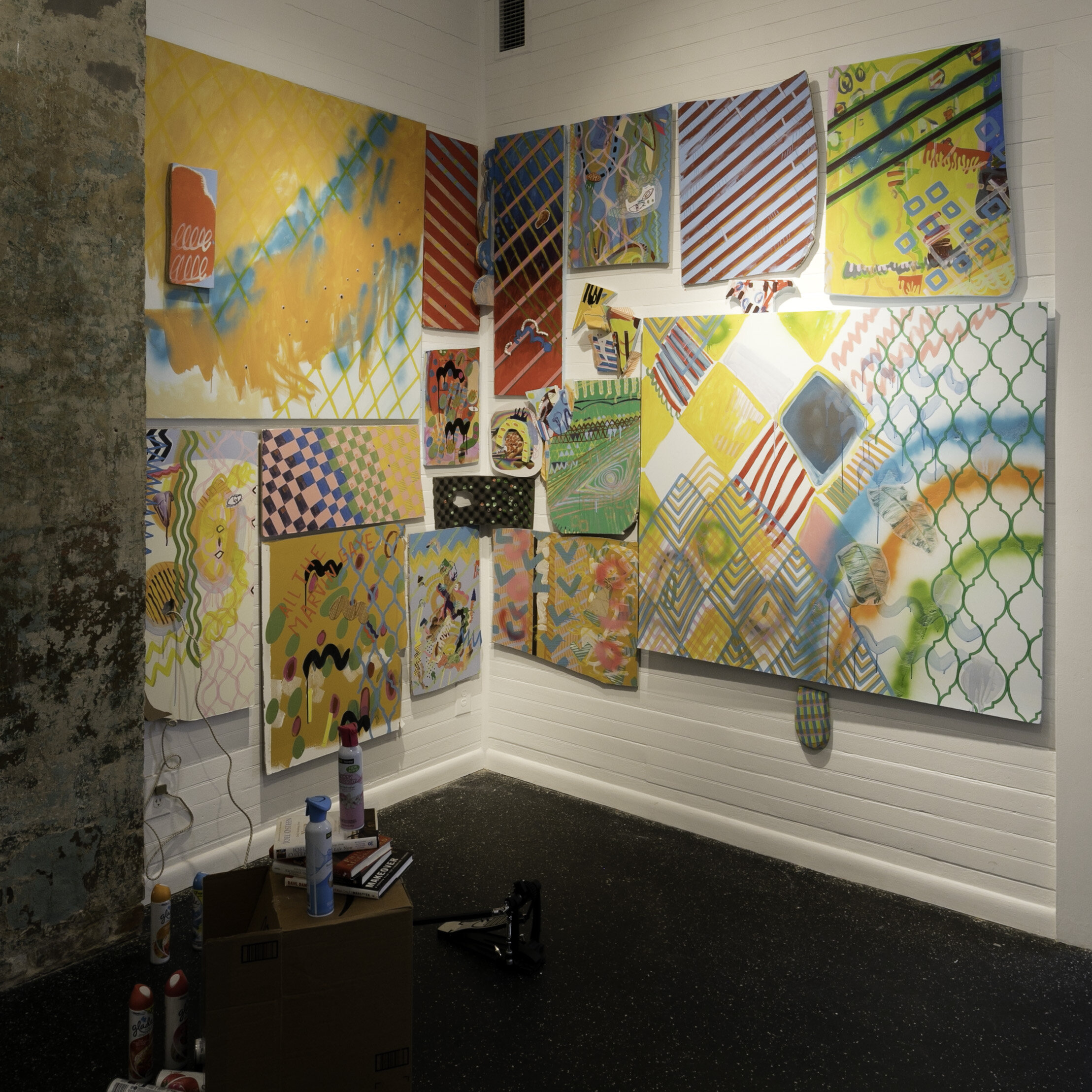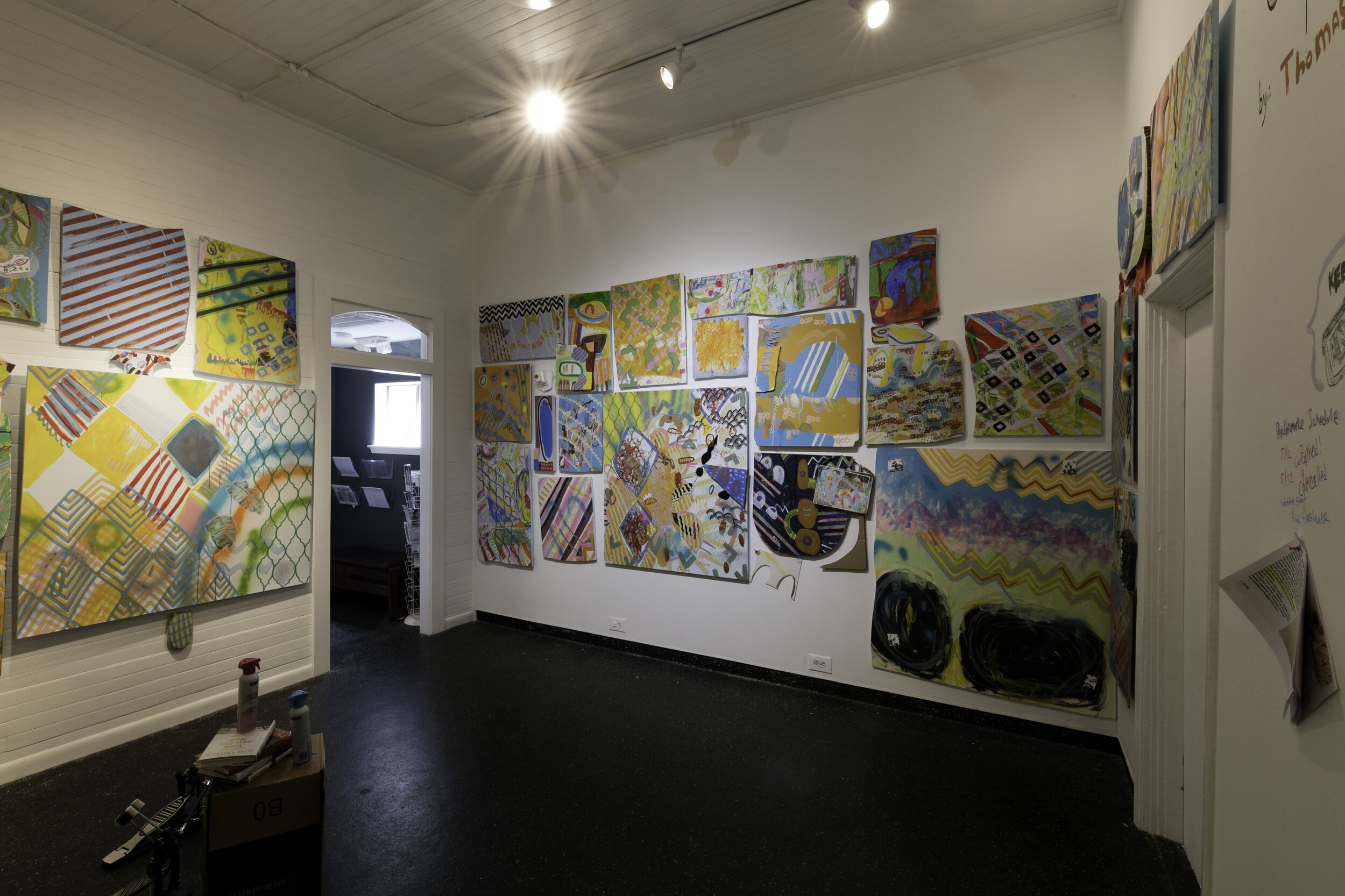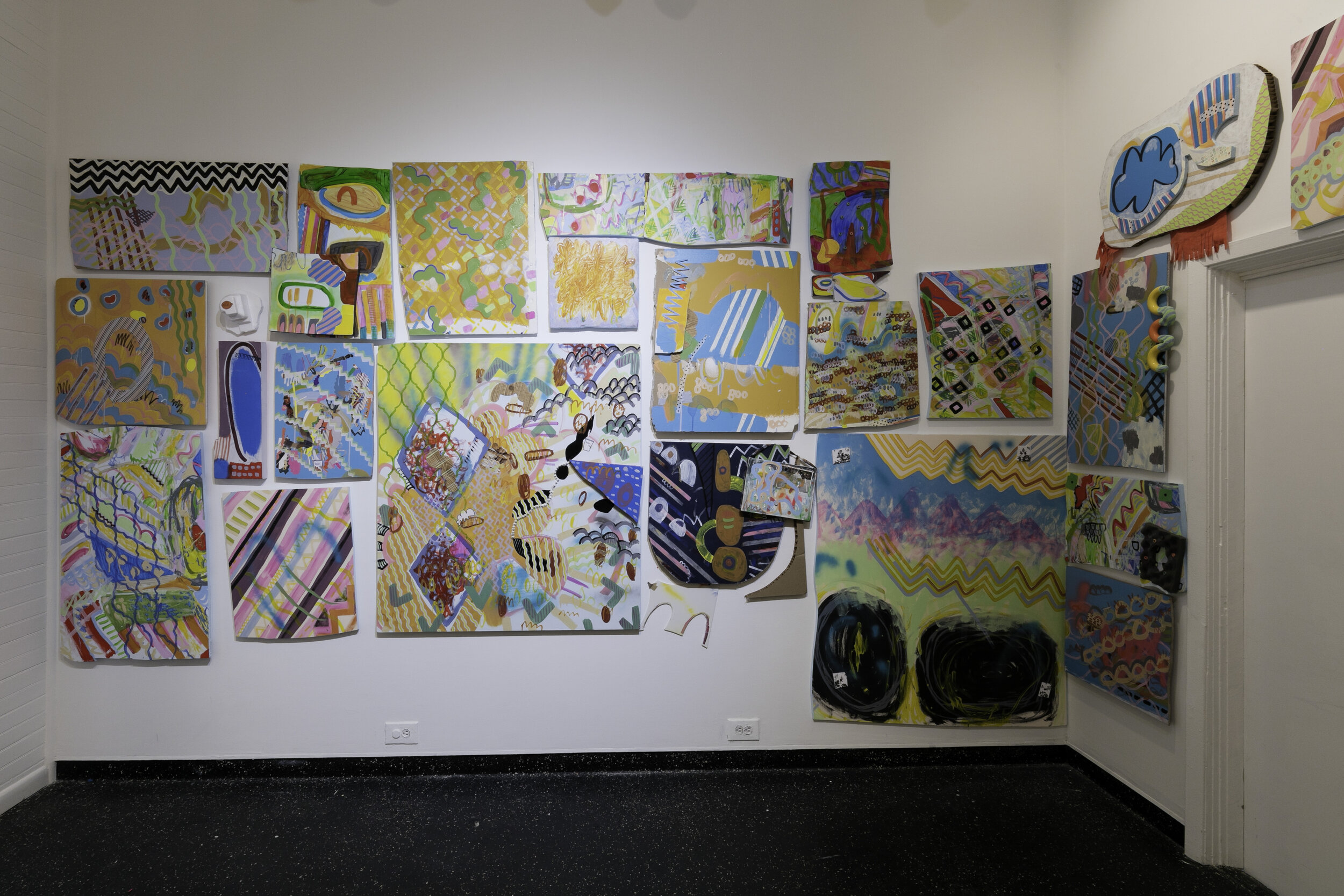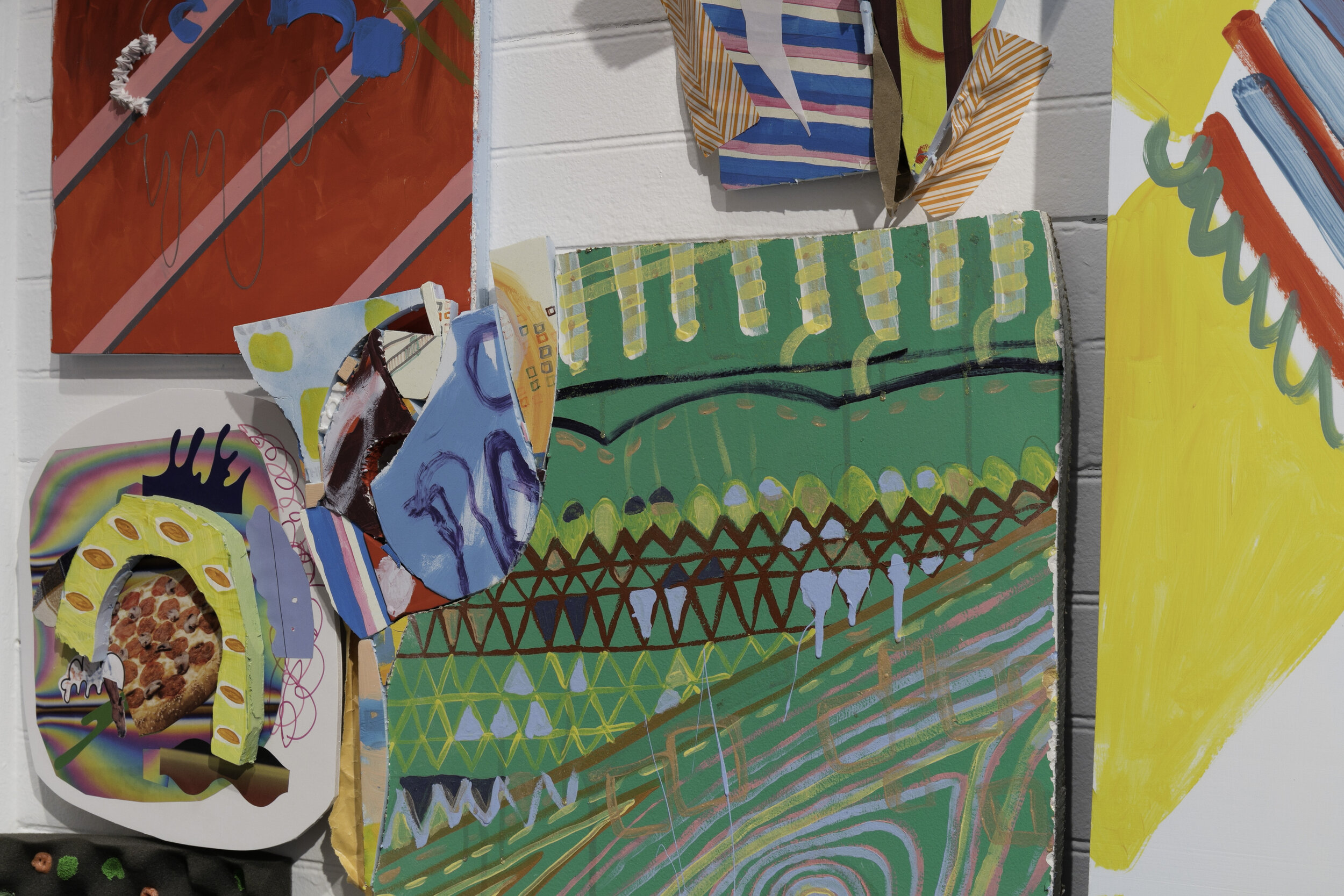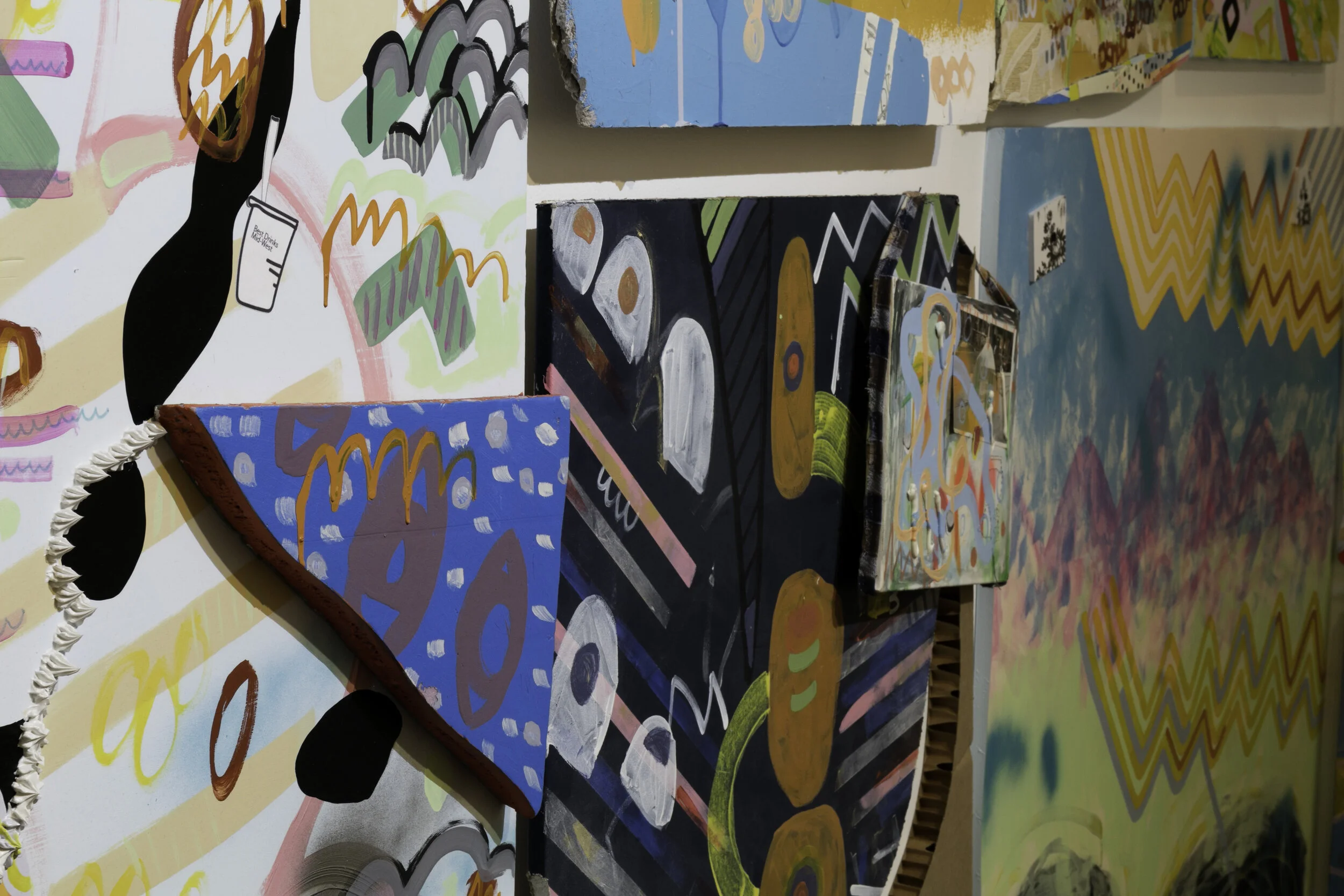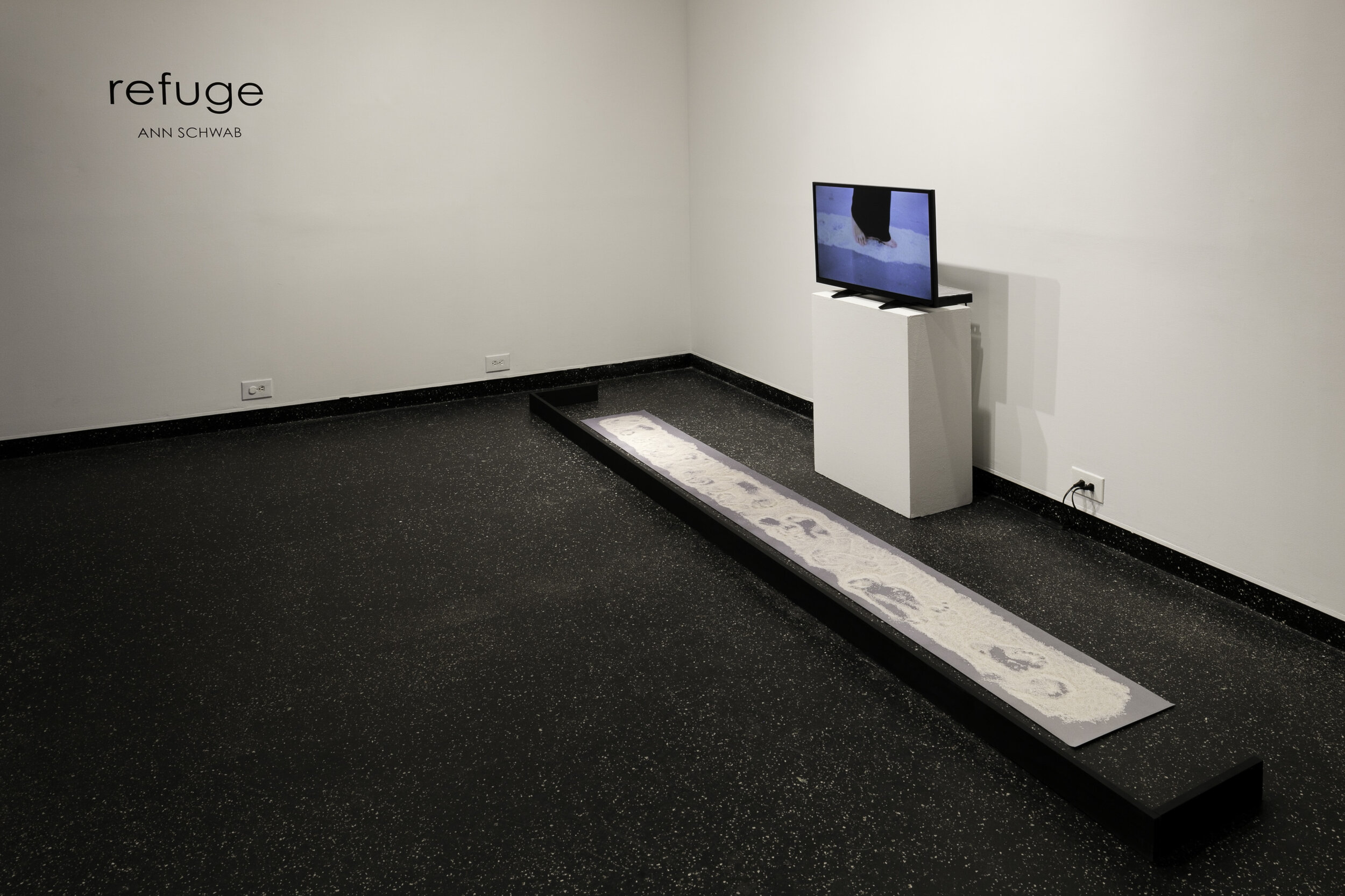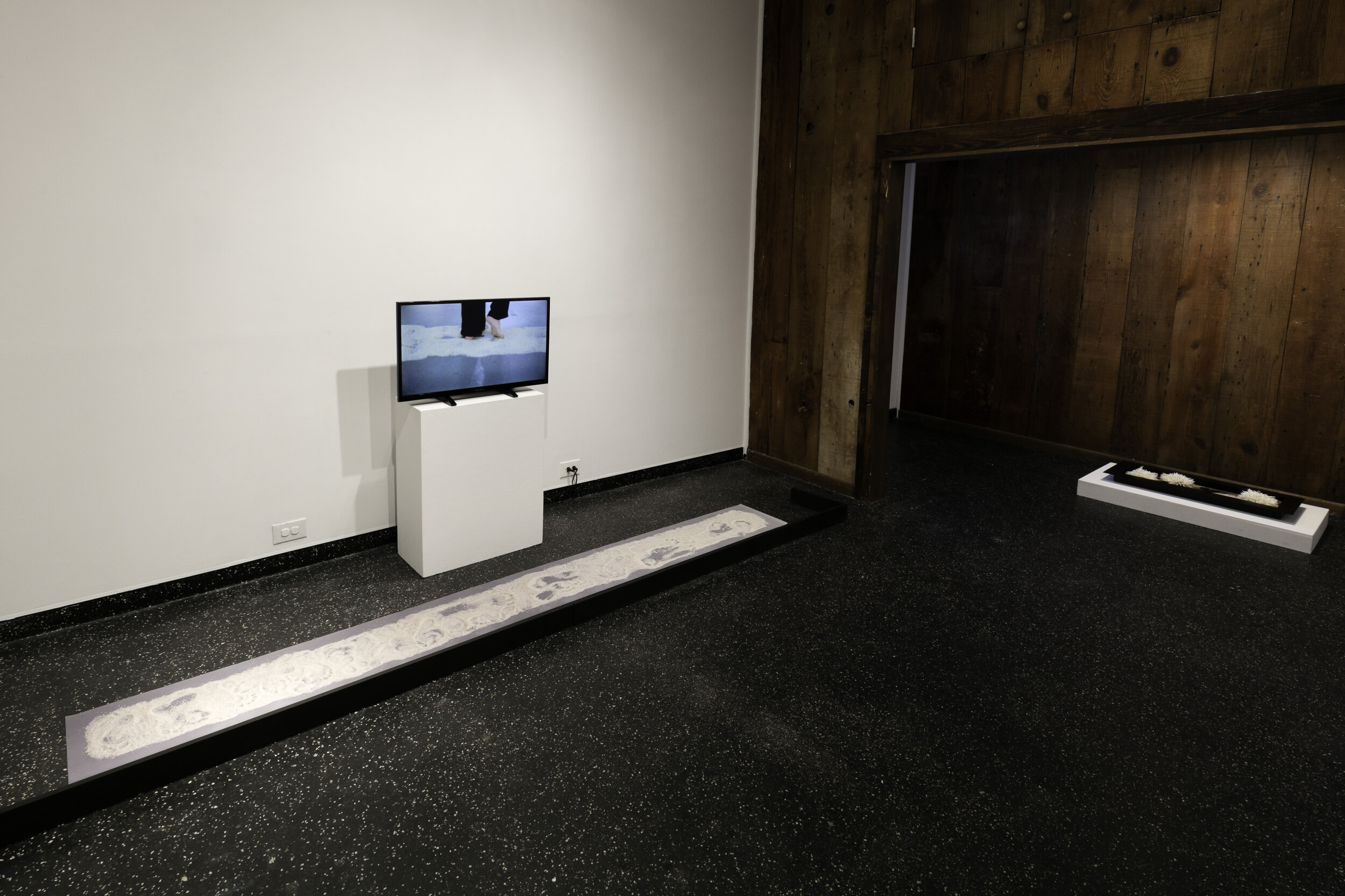May 12- June 3, 2018
Opening reception Saturday May 12th, 6-10pm
With live performance by Scramble Neck Jones Christmastime: Walker of Eggshells, Keeper of Receipts & Perspirer of the Unknown: opening night, 5/12 at 7pm and 9pm and then from there "whenever or never Jones Christmastime wants to perform again".
Room 1:
Ashley Anderson, Simulation, archival digital prints, 6x9”, 2016.
Ashley Anderson
The 101 Views of Mt. Fuji: An Art- Historical Excavation of Early Gaming
Designed as a contemporary response to master Japanese printmaker Hokusai’s “100 Views of Mt. Fuji” of 1834, Ashley Anderson’s series catalogs the world famous mountain through myriad representations selected from early video game visuals and culture. Hokusai’s original “100 Views” celebrated Mount Fuji and its association with eternity within his Buddhist practice. Beyond mere veneration, however, the project was also Hokusai’s petition to Fuji for earthly longevity and artistic immortality. Flattering the mountain’s spirit, the 73 year old artist harnessed major cultural and religious ideals of the time in his endlessly inventive and elegant series of prints.
For Anderson, “The 101 Views” are partly a tongue-in-cheek response to Hokusai’s beautiful series. Anderson’s work also functions as a catalog of Fuji’s pervasiveness across a variety of video game genres, resolutions, and palettes. Enthusiastically nodding to surrealism, pop, and often celebrating the painterliness of raster, “The 101 Views” abandons Fuji the unchanging but upholds Fuji the peerless. It is an outsider’s work culturally, spiritually, chronologically, and technically.
For five years, Anderson collected screen captures of Fuji from over 100 video games. He then intricately reworked each archived image by editing, rearranging, and redrawing certain elements. Anderson’s love of pop culture, art history, absurdist humor, and especially a love of Hokusai guided the generation of this series. Importantly, while the views of Mount Fuji of Hokusai are eccentric, those of Anderson are ludic.
Ashley Anderson is a 2005 Bells Honors graduate of Georgia Southern University, a 2013/2014 MINT Leap Year fellow, and a Hambidge Fellow of 2014 and 2017. Ashley has shown work on the walls of the High Museum, the billboards of Atlanta, the televisions in Finland, and been published in Wired UK, Beautiful/Decay, Burnaway, and WABE. He works in several media including painting, drawing, digital collage, and cyanotype to feed his curiosity about obsolete digital imagery's capacity to correspond with the history of visual expression.
A selection of 25 images:
https://pressstarttobegin.net/portfolio/the-101-views-of-mt-fuji-2016/
Purchase prints from the edition:
https://squareup.com/store/pressstarttobegin
Artist talk from the original exhibition:
https://tinyurl.com/y8u92rad
Room 2:
Jared Ragland, Untitled (Window, Central City, New Orleans), Archival Pigment Print, 16x20 inches, ed of 5, 2015
Jared Ragland
Everything is Going to Be All Right
“All these years I have been assuming that between us words mean roughly the same thing, that among certain people, gentlefolk I don’t mind calling them, there exists a set of meanings held in common.” Walker Percy, The Moviegoer
Set in New Orleans, Walker Percy’s 1961 novel The Moviegoer is steeped in a sense of the collective culture and customs of the American South. Similarly, much of the work of artist Jared Ragland is rooted in his lifelong exposure to the landscapes, people, aesthetics, and storytelling traditions of this part of the country. Ragland’s imagery is imbued with his personal history and identity of place, and many Southern viewers will find something recognizable in his pictures. Yet while the familiar does provide a point of entry for understanding, as the subtext of Aunt Emily’s line in The Moviegoer quoted above suggests, the context or combinations in which Ragland’s images are presented reveals alternate, more nuanced meanings. It is the search itself, rather than arriving at some certainty, that fascinates Binx Bolling, the main character in The Moviegoer. Likewise, it can be said that Ragland’s goal as an artist is to encourage viewers to journey toward an understanding of his work based not only on observation, but also on self-reflection. Ragland takes the commonplace and recontextualizes it in conceptual narratives that often fluctuate in feeling between intimacy and distance, private and public, realism and metaphor.
In Everything is Going to Be All Right, Ragland employs both traditionally made black and white photographs and digitally sourced appropriated imagery to produce a meditation on Percy’s The Moviegoer that dissolves boundaries of space, place, and time yet maintains a consistent emotional sensibility. Made in New Orleans and largely shot at night, the photographs loosely document a dispossessed urban landscape, particularly the approximate locations of single screen movie theaters that once ubiquitously populated the city. After photographing these locations, Ragland input the theaters’ names -- ones like The Tiger, The Cortez, Dreamland, and The Gaiety -- into Google image search to create a database of images that shares the landscape photographs’ melancholic tones. The result is a body of work that has deep historical connections yet simultaneously addresses the plurality of symbolic functions alongside the artist’s own personal search for meaning amid feelings of loss, isolation, alienation, and malaise.
- Catherine Wilkins, Ph.D. University of South Florida
Everything is Going to Be All Right
To become aware of the possibility of the search is to be onto something. Not to be onto something is to be in despair.
REMEMBER TOMORROW
Starting point for the search:
It no longer avails to start with creatures and prove God.
Yet it is impossible to rule God out.
The only possible starting point: the strange fact of one’s own invincible apathy–that if the proofs were proved and God presented himself, nothing would be changed. Here is the strangest fact of all.
Abraham saw signs of God and believed.
Now the only sign is that all the signs in the world make no difference.
- Walker Percy, The Moviegoer
Room 3:
Thomas Friel with Scramble Neck Jones Christmastime
Ohmman Sukurity and B4closure $ales
“You wanna talk to me cuz you think I DIED, innit? Some people would be thankful for even that much acknowledgement. Not me. Not if it don’t come with a tall one.”
His voice sounded like it was dragged behind a pickup truck on dirt roads across the Midwest. For miles and days, so it had time to get used to the trauma it undertook and somehow adapt. Scramble Neck Jones Christmastime hadn’t smoked in over 30 years, still, his polyphonous hacking conjured stretches of those midwest roads before they were all paved.
“But have they all been paved? And how much should you care about whether or not a roads been paved?”
What the. Shit.
“Oh? So lemme get this straight: you and your designer jeans tracked me down to talk about why your daddy hates you, and your mommy coddles you to make up for the fact that he’s a shit to you and your sister, but you didn’t know I could read minds?”
He looked away and slugged from a fifth of Old Crow.
“At least, I can read the minds of those who can’t think, I should say.”
This was the thing: Revelations, scathing burn, then self deprecation to burn you harder. I knew that already, so I was only moderately hurt by his insult. I had spent the last decade growing more and more attached to the stories I heard, which while numerous, lacked any resolute facts. Somehow in my mind this seemed only to frustrate the incredibly sparse amount of songs he had to his name, including only one proper album. Multiple families in different states, and no one can confirm or deny that the wives and children knew each other. Charity concerts for the blind several times, and once, he unsuccessfully tried to stage one for the deaf. Scrawled lyrics bearing his name on trains throughout the east coast, even more in gas station bathrooms on the West Coast. Together forming a catalog of hundreds of songs possibly never recorded. Tax evasion in 32 states. There’s also the notorious William Tell story I’ve heard and unheard and reheard so many times. He denies this one always, not because it implicates him in the murder of his only brother, but because it is “wholly un- IRIG-inal, and I am only ever original. Get that right first or get out.”
And yet, and I hope he never reads this, though I doubt he reads anything anymore, except bar tabs and palms: his songs are far from original. They are fairly easily located within the history of mid-century American folk and garage, in many ways sounding like copies of copies. A shadow of the blues in a room where incandescent lighting knocks back shadows from the sun. Perhaps the most spectacular thing about his music is that it is so unspectacular. Unremarkable but far from forgettable. It suffers from its sloppiness and inconsistencies, yet maybe that’s what is so interesting about it - the sheer joy in the unrefined?
“Never use the word ‘interesting’ to describe anything worth smelling your farts on. And don’t EVER use it to describe anything I do, unless you want me to cut your cock off right now and shove it in your goddamn silver spoon mouth!”
A pause, almost a different person.
“Now, don’t tear up son. I don’t hate you, since I’m still here. But you are boring me. Why don’t you crack a couple of those beers you brought us?”
The PBRs were practically at room temp by now, but only the hesitant percussive hiss the first can let out released the dry eyed stare planted on my slick eyes. For a moment, I thought he might have needed the fluid from my eyes for his own dehydrated optics. But right then, as he turned his head to the sky, I remembered to stop thinking near him. Plus I was in for something that might turn to some worthwhile regret, since Scramble Neck Jones Christmastime never looked at the sky unless he was about to howl at the moon.
- (excerpt from forthcoming history of Scramble Neck Jones Christmastime)
With live performance by Scramble Neck Jones Christmastime: Walker of Eggshells, Keeper of Receipts & Perspirer of the Unknown: opening night, 5/12 at 7pm and 9pm and then from there "whenever or never Jones Christmastime wants to perform again".
Tom Friel is alive as of this posting and can be found somewhere in the city of New Orleans.
Like you, a bunch of stuff has happened to get him to this point.
More importantly, like you, he will die some day, hopefully before he thinks he is ready.
He hopes some really cool stuff happens before then, but who knows?
Scramble Neck Jones Christmastime refused to give any biographical information.
Room 4:
Ann Schwab
In 2013, a friend taught me tai chi.
A moving meditation.
A way to quiet oneself and breathe out the technological world that we inhabit daily.
As we do our daily tai chi on a studio floor covered in clay dust, I slow down to acknowledge the patterns created in the dust– the physical evidence of my meditation.
A visible, tangible document of energy and flow.
I have translated this dust into rice- a staple of both the Chinese culture where tai chi began and the culture of my southern home– New Orleans– where I grew up eating rice with almost every meal.
These patterns become a physical representation of the link between East and West,
the spiritual tradition of the past and the present.
These patterns have a personal meaning for me, as well– a link between New Orleans
and China– where my brother has lived for the past 11 years. My family spread across the planet– separated by an ocean, yet connected by technology. He is only a video chat away, telling me: “Yeah, I see people doing tai chi in the park across the street from our apartment. That’s what old people do.”
Even in the birthplace of tai chi, the technology of contemporary life replaces the appreciation of spirituality.
Science confirms both the neurological and physical benefits of meditation and the detrimental effects of a technologically infused life. Lower blood pressure, resistance to Alzheimer’s, resilience in the face of stressors, increased empathy– all are by-products of
a spiritually aware life.
As technology is absorbed into our daily lives, we look down at our hand-held devices instead of out at the world. We forget how to day-dream or sit quietly. We become insular, less empathetic and more dogmatic. We have shorter attention spans, require greater stimuli and instant gratification, and disassociate with the natural world.
For fifteen minutes each day, I can create patterns on a floor, which mark my resistance to disassociation and connect me to a tradition of spirituality that has endured for hundreds of years.
Ann Schwab received her B.F.A. from the Maryland Institute College of Art, an M.F.A. from Tulane University and has studied at SACI in Florence, Italy. She has been the recipient of numerous awards including: a Maryland State Arts Council Fellowship, a Louisiana Division of the Arts Fellowship, a Surdna Foundation Fellowship and professional development grants from the Louisiana Cultural Economy Foundation, the Creative Capital Foundation, the Louisiana Division of the Arts, Anderson Ranch and the Surdna Foundation. Her works have been exhibited nationally and internationally and are held in numerous corporate and private collections. Ann Schwab is Assistant Chair of Visual Arts at the New Orleans Center for Creative Arts, where she is on the teaching faculty. In 2016, Schwab was selected to join the ART21 Educator network, an innovative group of educators who enact creative strategies for teaching and learning with contemporary art.
Her professional website is: www.annschwab.com
